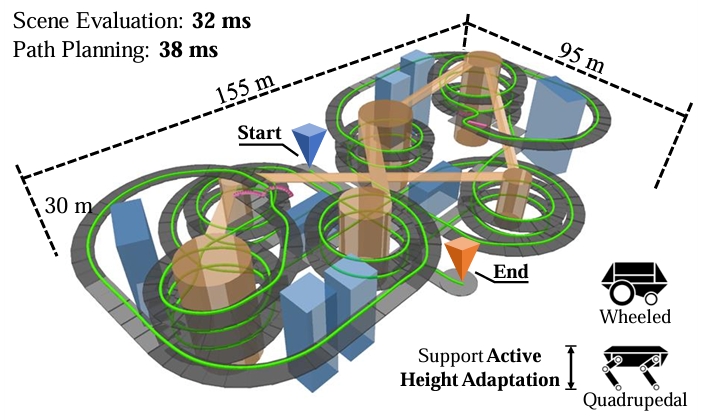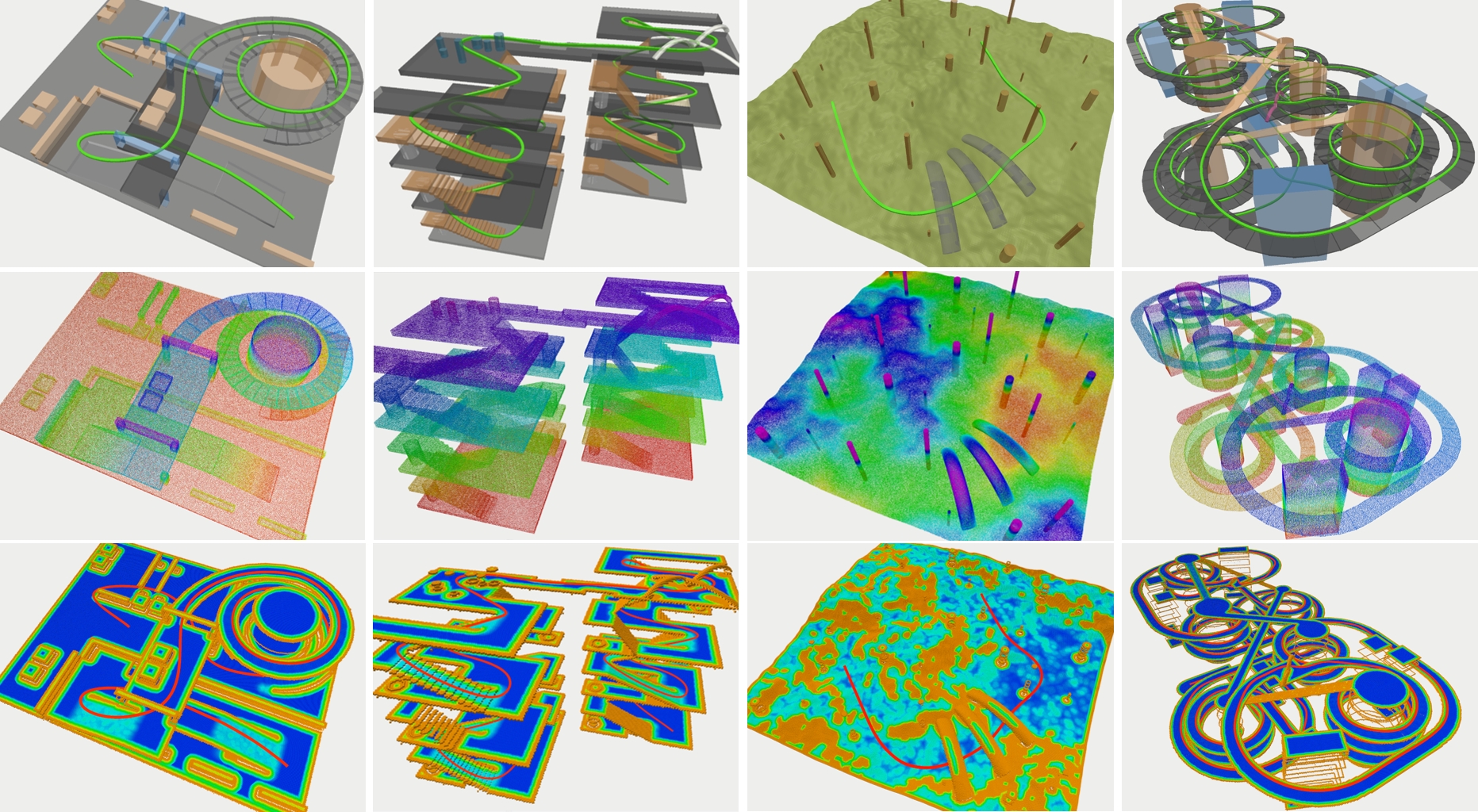Efficient Global Navigational Planning in 3D Structures based on Point Cloud Tomography
Accepted by IEEE/ASME Transactions on Mechatronics
Navigating ground robots in 3D environments is essential for a wide range of autonomous applications. However, it’s still challenging to efficiently evaluate multilayer scenarios with complex terrain conditions and spatial structures, where a proper environmental representation would assist to improve the scene evaluation speed.

We propose a highly efficient and extensible global navigation framework based on a tomographic understanding of the environment to navigate ground robots in multi-layer structures. Our approach generates tomogram slices using the point cloud map to encode the geometric structure as ground and ceiling elevations.

Then it evaluates the scene traversability considering the robot’s motion capabilities. Both the tomogram construction and the scene evaluation are accelerated through parallel computation.

Our approach further alleviates the trajectory generation complexity compared with directly planning in 3D spaces. It generates 3D trajectories by planning through multiple tomogram slices and separately adjusts the robot height to avoid overhangs.

The navigation approaches are evaluated in complex 3D structures. The following environments are prepared to analyze the navigation performance.
In the following figure, the first row presents the 3D models of environments. The second row shows the point clouds of the scenarios and the third row presents the integrated travel cost maps generated by our approach. Our approach provides feasible and smooth trajectories in these complex 3D scenarios with various structured or irregular terrain features and overhanging objects.

Comparing the navigation capabilities, our approach provides smooth trajectories considering the robot’s capabilities of locomotion and body height adjustment in complex environments, presenting strong potential in a wide range of applications.


Our approach reduces the scene evaluation time by 3 orders of magnitude and improves the path planning speed by 3 times compared with existing approaches, demonstrating highly-efficient global navigation in complex 3D environments.

Our quadrupedal robot successfully finished these navigation tasks in real-world experiments following the generated trajectories. In "boxes", the robot actively adjusts its body height to avoid the overhangs and prefers to move up to the platform through the gentle slope as the slope has lower travel costs and is safer than the steep stairs.
